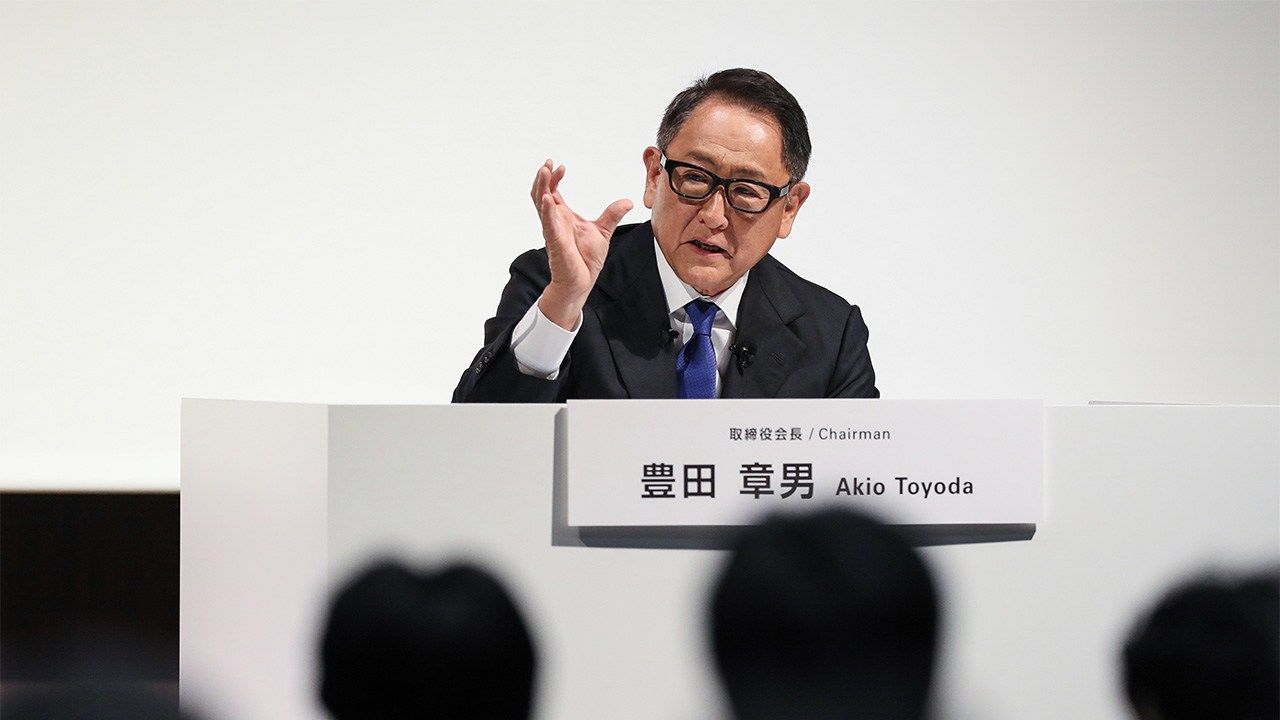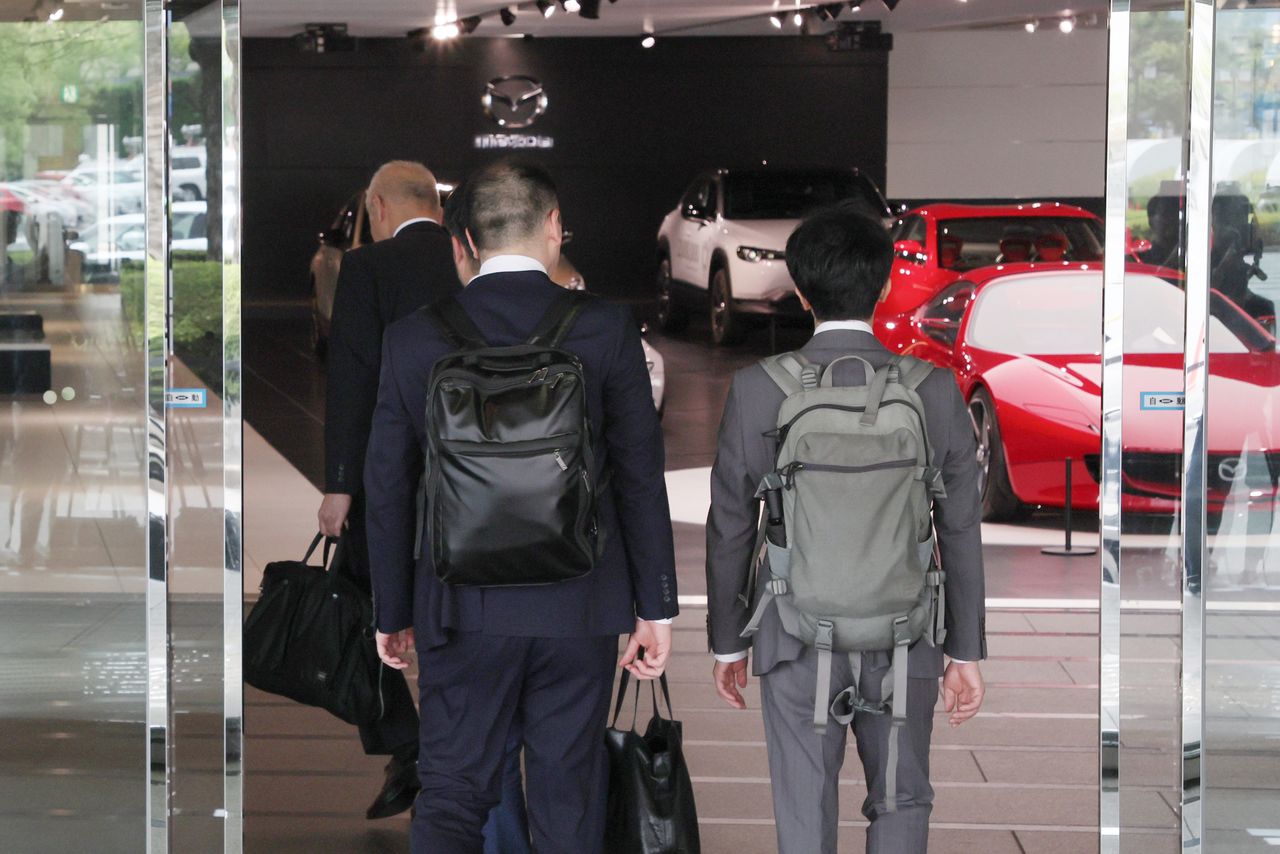
Japanese Vehicle Makers Mired in Wide-Ranging Fraud Scandal
Economy Society World- English
- 日本語
- 简体字
- 繁體字
- Français
- Español
- العربية
- Русский
Revelations that Shocked the World
News of fraudulent vehicle certifications by five Japanese motor vehicle manufacturers first broke on June 3, 2024, making waves both in Japan and overseas. According to the Ministry of Land, Infrastructure, Transport, and Tourism, the misconduct reported affects a total of 38 models manufactured by Toyota, Honda, Mazda, Yamaha, and Suzuki. The revelations have forced Toyota to suspend production of three models, Mazda two, and Yamaha one. Suzuki and Honda were not subject to production shutdowns because in their case, the affected models are no longer being made.
While this is not the first time that Japanese vehicle manufacturers have been found to be engaged in misconduct, it is likely the first time that such wide-ranging conduct by so many manufacturers has been identified. In fact, Japanese corporations had enjoyed a good reputation internationally for their professional stance on fraudulent acts. The expressions of surprise from around the world over the fact that Japan’s manufacturers were breaking the rules were only natural.
Let us take a look at how the misconduct allegations came to light. Revelations of misconduct began surfacing in 2022, when it was revealed that Hino Motors, Toyota Industries Corporation, Daihatsu, and other manufacturers had engaged in misconduct in relation to type certifications. The Ministry of Land, Infrastructure, Transport, and Tourism, which has jurisdiction over type certifications, ordered investigations into a total of 85 companies, including several Japanese vehicular and device manufacturers. An audit of past records led to the five manufacturers mentioned admitting to misconduct.
Each manufacturer reviewed a huge volume of records, with Toyota alone reviewing 7,000 records spanning a period of 10 years. Because a single type certification involves hundreds of individual tests, even to use a conservative estimate, this represents a total of tens of thousands, if not hundreds of thousands, of individual tests. After reviewing all data was reviewed, impropriety was identified in respect to six Toyota certifications affecting seven different models.
If the ministry had not ordered such a major audit, we would not have seen this kind of simultaneous reporting of misconduct by multiple manufacturers. Many cases of misconduct could have been covered up and never come to light. We should first recognize that the extent of the revelations is partly attributable to this audit.
Toyota announced on July 5 that it had finished its investigation of its certification process, which until then it had simply described as being “under investigation.” However, the manufacturer was later forced to suspend shipments of Noah and Voxy minivans after the Ministry later identified additional cases of misconduct affecting seven more models. Then, on July 31, the scandal flared up again as the ministry ordered Toyota to improve its governance arrangements.

Transport Ministry officials raid Mazda offices in Hiroshima Prefecture in June. (© Jiji)
Complex Processes to Blame?
The fact remains that a considerable number of Japan’s car manufacturers were complicit in wrongdoing. I approached several manufacturers for an answer, but they either told me that they did not know or that matter was under still investigation. One reason that these manufacturers had difficulty explaining their misconduct was the time- and resource-consuming nature of the type-certification process. In fact, Toyota CEO Toyoda Akio said at a press conference that the complex and extensive nature of the type certification process meant he doubted that anyone in the industry, himself included, fully understood it.
And this dissatisfaction does seem to exist, with some manufacturers appearing unhappy with their treatment by the authorities. When they apply for certification, if they fall short in some area, it can be very hard to get a clear explanation of what exactly is the issue; the ministry’s failure to plainly state the reason for a rejection prevents the certification process from moving as smoothly as it might.
That said, the Ministry of Transport has jurisdiction over the car industry, and Toyota could not risk falling foul of it. Complaining about the complexity of the process at a press conference held to own up to misconduct could be construed as making excuses. It appears that because of this dynamic, car manufacturers were unable to express their dissatisfaction with the ministry.
It goes without saying that in Japan, vehicle manufacture is a key industry, a foreign currency earner, and a driver of the economy. Surely the enforcers of the law, instead of merely ordering manufacturers around, should on occasion consider the issue from their perspective. I am informed that in Europe and the United States, auto manufacturers enjoy a somewhat more cooperative relationship with regulatory authorities, and governments strive to support the industry. While the same phenomenon also exists in Japan to a degree, I feel that the authorities could have been more receptive to a consultative approach with manufacturers.
Fundamental Principles of Evaluation Criteria
Some quarters, chiefly the automotive media, have shown (sometimes misplaced) sympathy for car makers. These pundits argue that Japanese manufacturers took safety seriously by establishing more stringent standards than those required under the law, and that for government agencies to declare this to be fraud is an abuse of power.
Toyota’s rear collision tests are cited as an example. Toyota states that instead of firing a movable barrier with a standards-defined mass of 1,100 ± 20 kilograms at the vehicle, they used an 1,800-kilogram barrier. While Toyota has admitted impropriety, some in the media have ridiculed the authorities’ decision to classify the use of a test more stringent than the standard as a kind of fraud. I am frankly not in a position to say whether testing with a barrier weighing 1,800 kilograms , rather than a 1,100 kilograms, enhances or impairs safety. However, Japan did not set the 1,100 ± 20kg standard independently. Rather, it is based on internationally agreed principles. In other words, the same standards are applied in many other countries. Unified international standards mean that once a manufacturer has obtained type certification in its own country, it can export cars overseas without repeating the process in the importing countries. This is the underlying principle behind international agreement. Many of these standards have been adopted after being debated at the United Nations’ automotive safety standard forum (the United Nations Economic Commission for Europe World Forum for Harmonization of Vehicle Regulations—WP.29).

Whiplash testing on Toyota’s discontinued Sienta was performed using a moving barrier heavier than the standard. (© Toyota)
Let us consider what would happen if Japanese car manufacturers were to test vehicles using independently developed standards. They would be subject to calls from importing nations not to export untrustworthy cars. This would be suicidal for Japanese car manufacturers, which export between 70% and 90% of their output. If Japanese auto manufacturers are still of the belief that it is possible to guarantee safety using an 1,800-kilogram barrier, they should call on the UNECE to change the standard from its present range near 1,100 kilograms to 1,100 kilograms or above. That way, the use of a heavier barrier would not be deemed a breach of regulations, and they could use a 1,800-kilogram barrier without breaking the rules.
Whatever the case, though, UNECE would definitely have had rational grounds for setting the barrier mass in the range near 1,100 kilograms. To ignore this fact, and declare the use of a heavier barrier as better for safety, can only be described as a leap of logic.
Again, Toyota has admitted that it engaged in malpractice. If, as the media claim, Toyoda Akio really did say, “In Japan, there’s no incentive to do your best anymore,” he would not have meant that Japanese standards are unreasonably stringent, but something different. My guess is that Toyoda was frustrated by the current distorted relationship between the industry and the regulators, and the way that some media have attacked car manufacturers without properly understanding the nature of this issue.
It is an undeniable fact that some Japanese manufacturers engaged in fraud. In order to ensure that the scandal does not trash Japan’s international reputation, there is a need for the implicated manufacturers to make a serious effort to get to the bottom of the issue and prevent it from happening again.
(Originally published in Japanese. Banner photo: Toyota CEO Toyoda Akio addresses reporters in Tokyo on June 3, 2024. © Jiji.)

